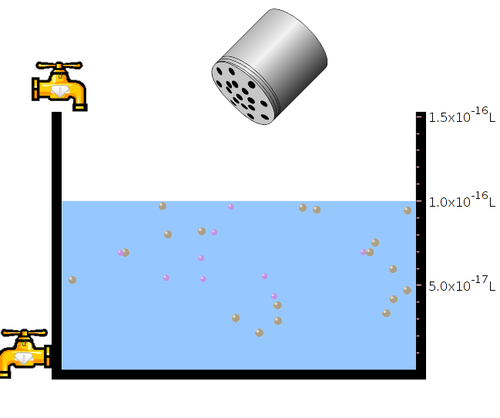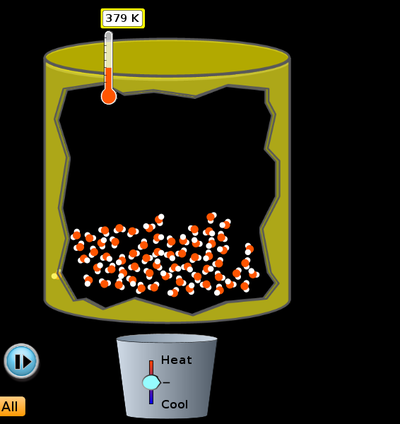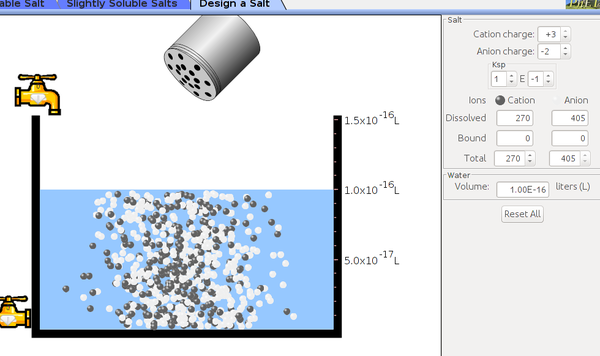Difference between revisions of "Number System"
| Line 58: | Line 58: | ||
#Activity 1 - [[Quantity and Numbers|Introduction_to_quantity_and_numbers]] | #Activity 1 - [[Quantity and Numbers|Introduction_to_quantity_and_numbers]] | ||
#Activity 2 | #Activity 2 | ||
| + | |||
| + | ==Concept #3 Negative numbers are the opposite of positive numbers== | ||
| + | |||
| + | === Objectives === | ||
| + | # To extend the understanding and skill of representing symbolically numbers and manipulating them.<br> | ||
| + | # To understand that negative numbers are numbers that are created to explain situations in such a way that mathematical operations hold<br> | ||
| + | # Negative numbers are opposite of positive numbers; the rules of working with negative numbers are opposite to that of working with positive numbers<br> | ||
| + | # Together, the negative numbers and positive numbers form one contiuous number line<br> | ||
| + | # Perform manipulations with negative numbers and express symbolically situations involving negative numbers<br> | ||
| + | |||
| + | ===Notes for teachers=== | ||
| + | Negative numbers are to be introduced as a type of number; they do the opposite of what positive numbers do.<br> | ||
| + | Read the activity for more detailed description. | ||
| + | |||
| + | ===Activities=== | ||
| + | #Activity 1 -[[What are negative numbers|Introduction_to_negative_numbers]] | ||
| + | |||
| + | |||
| + | |||
==Concept #3 Number Bases== | ==Concept #3 Number Bases== | ||
Revision as of 18:01, 7 July 2016
- Back to Mathematics Portal
- Back to Topics in School Mathematics
- Resource Creation Checklist - for guidelines on how to add resources.
Concept Map
Error: Mind Map file Numbers.mm not found
Textbook
To add textbook links, please follow these instructions to: (Click to create the subpage)
Additional Information
Useful websites
Watch the following video on the story of how numbers evolved. The video called Story of One tells how numbers evolved and the initial questions around number theory.
This video is related to number system, helps to know the basic information about number system
Reference Books
Teaching Outlines
Concept #1 - History of Numbers
Learning objectives
- What is the story of numbers?
- How did counting begin and learning distinguish between the quantity 2 and the number 2.
- The number "2" is an abstraction of the quantity
Notes for teachers
These are short notes that the teacher wants to share about the concept, any locally relevant information, specific instructions on what kind of methodology used and common misconceptions/mistakes.
Activities
- Activity Template
- Activity 1
- Activity 2
Concept #2 Number Sense and Counting
Objectives
1. Understand that there is an aspect of quantity that we can develop with disparate objects
2. Comparison and mapping of quanties (more or less or equal)
3. Representation of quantity by numbers and learning the abstraction that “2 represents quantity 2 of a given thing”
4. Numbers also have an ordinal value – that of ordering and that is different from the representation aspect of numbers
5. Expression of quantities and manipulation of quantities (operations) symbolically
6. Recognizing the quantity represented by numerals and discovering how one number is related to another number
7. This number representation is continuous.
Notes for teachers
This is not one period – but a lesson topic. There could be a few more lessons in this section. For example, for representing collections and making a distinction between 1 apple and a dozen apples. This idea could be explained later to develop fractions. Another activity that can also be used to talk of units of measure. Addition and subtraction have been discussed here – extend this to include multiplication and division).
Activities
- Activity 1 - Introduction_to_quantity_and_numbers
- Activity 2
Concept #3 Negative numbers are the opposite of positive numbers
Objectives
- To extend the understanding and skill of representing symbolically numbers and manipulating them.
- To understand that negative numbers are numbers that are created to explain situations in such a way that mathematical operations hold
- Negative numbers are opposite of positive numbers; the rules of working with negative numbers are opposite to that of working with positive numbers
- Together, the negative numbers and positive numbers form one contiuous number line
- Perform manipulations with negative numbers and express symbolically situations involving negative numbers
Notes for teachers
Negative numbers are to be introduced as a type of number; they do the opposite of what positive numbers do.
Read the activity for more detailed description.
Activities
- Activity 1 -Introduction_to_negative_numbers
Concept #3 Number Bases
Learning objectives
Notes for teachers
These are short notes that the teacher wants to share about the concept, any locally relevant information, specific instructions on what kind of methodology used and common misconceptions/mistakes.
Activities
- Activity 1 - Activity-1
- Activity 2 - Activity-2
Concept #4 Place Value
I Making hundreds, tens and ones (1 period)
- Print 32 squares of this.
- Distribute into 8 groups of 4 children each.
- Each group will get 4 squares.
- The value of 4 squares will be 4x100 = 400
- Each group must cut the solid lines; 1 square will have 10 strips. These are tens. So each square has 10 “tens” (They can either *cut, or work without cutting – up to the children)
- Each one of those tens will have 10 ones.
- Let the children make numbers and write them down
- Ask them what is the largest number each group can make? 400 is the answer – but check if children understand this.
II. Abstraction from here (1 period)
Now let us assume children have 9 such squares.
In each group, how many hundreds are possible ? – 9
In each group, how many tens are there ? – 9 x 10 = 90
In each group, how many tens are there ? – 90 x 10 = 900
1-9 ones are possible; 10 ones means one ten. Ten ones is the same as one ten
1-9 tens are possible; 10 tens means one hundred. Ten tens is the same as one hundred.
What happens when we have 10 hundreds? What is it the same as?
What is the importance of ten? We count in groups of tens
9+1= 10 = 10 x 1
99 + 1 = 100 = 10 x 10
999 + 1 = 1000 = 10 x 100
Greatest 1-digit number + 1 = Smallest 2-digit number
Greatest 2-digit number + 1 = Smallest 3-digit number
Greatest 3-digit number + 1 = Smallest 4-digit number
Following the pattern, we can expect that, on adding 1 to the greatest 4-digit number
(9999 – nine thousand nine hundred and ninety nine) we get the smallest 5-digit number
(9999 + 1 = 10,000 or ten thousand). Further we can expect that 10 x 1000 = 10,000 i.e.
9999 + 1 = 10,000 = 10 x 1000.
Do this only when children are confident – this is for advanced students
III. Fill number line (1 period)
Draw these one below the other
1,2,.......
10,20,.......
100, 200,.....
IV Tell stories and Play With Number Systems (1 period - optional)
http://www.math.wichita.edu/history/topics/num-sys.html#sense
(This page is downloaded and given as reading materials – page is called Number Systems)
V Questions/ activities for class
- Arrange in order – shortest, tallest, increasing and decreasing order
- Making numbers
Suppose we have 4 digits 7, 8, 3, 5. We want to make different 4-digit numbers using these digits such that no digits are repeated in each number. For example, you can make 7835 and 3578 but 7738 is not allowed because 7 is repeated and 5 is not used.
a. What is the greatest number you can make?
b. What is the smallest number?
c. Can you write down how you make the greatest number and the smallest number?
Use the given digits without repetition and make the greatest and smallest 4-digit numbers. Note that 0753 is a 3 digit number and is therefore not allowed.

- Now make the greatest and smallest 4-digit numbers by using any one digit twice.
Hint: Think about which digit you will use twice.

- Make the greatest/ smallest 4-digit numbers using any 4 different digits with conditions as given
Learning objectives
Notes for teachers
These are short notes that the teacher wants to share about the concept, any locally relevant information, specific instructions on what kind of methodology used and common misconceptions/mistakes.
Activities
- Activity 1 Activity-1
- Activity 2 Activity-2
Assessment activities
Hints for difficult problems
Project Ideas
Math Fun
Usage
Create a new page and type {{subst:Math-Content}} to use this template



